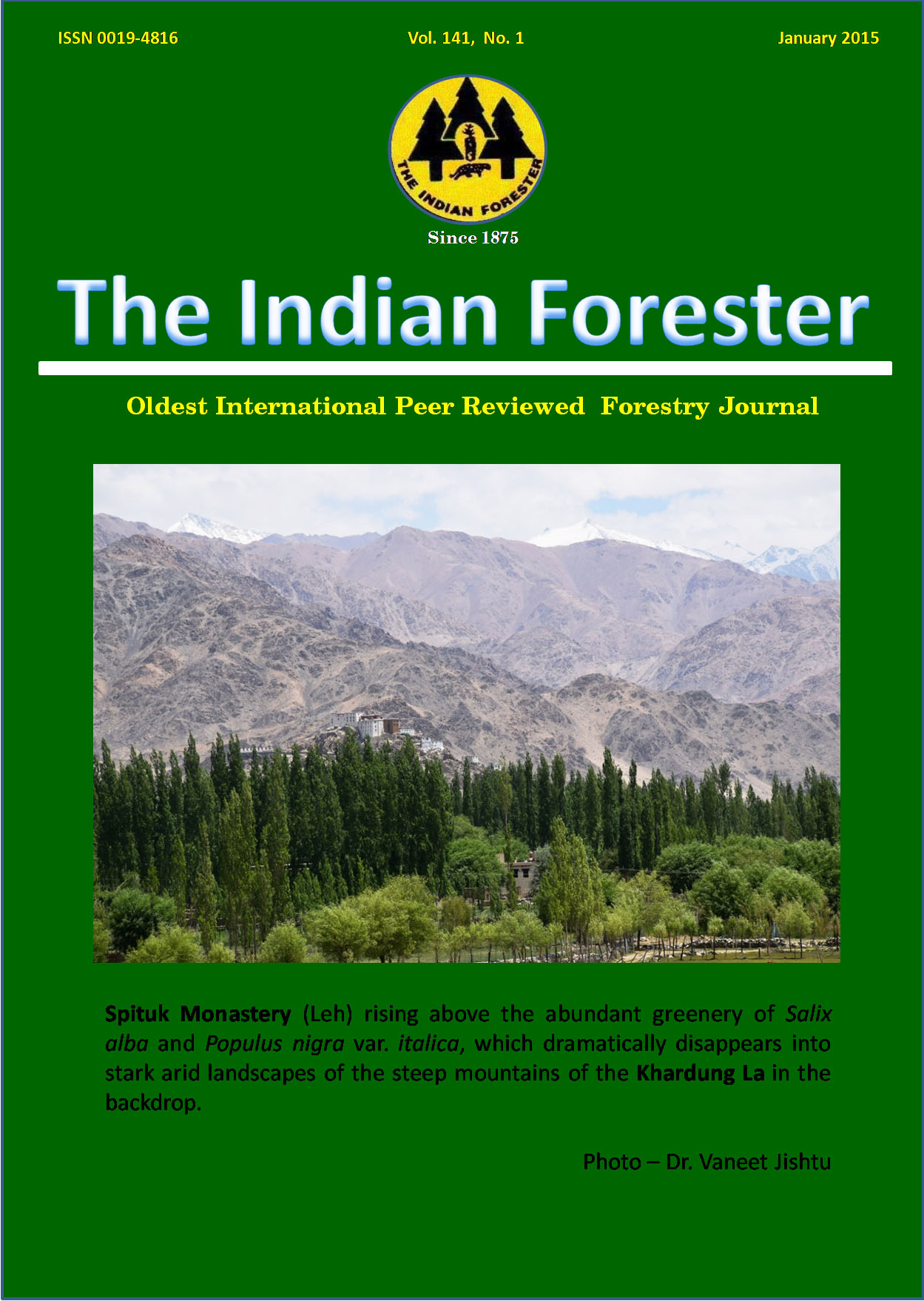Estimation of Divergence to Genetic Variation in Half-SIB Families of Madhuca indica GMEL. Under Greenhouse and Open Field Environmental Conditions
DOI:
https://doi.org/10.36808/if/2015/v141i1/56823Keywords:
Cluster, D2 Statistics, Genetic Divergence, Madhuca Indica.Abstract
This experiment was aimed to study the genetic diversity among twenty half-sib progenies of Madhuca indica belonging to different places of Allahabad (U.P), India. Seeds of 20 candidate plus trees were sown in greenhouse and open field environments with a view to assess the impact of two different environments on the expression of genetic diversity using Non-hierarchical Euclidean cluster analysis. Superior tree progenies were grouped into five clusters under green house as well as field environments. Families of plus trees S2 and S14 formed same groups in different clusters. Inter-cluster distance was found to be highest between cluster III and V, both under green house and field environment. Higher values of inter and intra cluster distance in field environment as compared to green house environment may be attributed to greater environmental differences, revealing their genetic closeness from high to medium. Leaf area followed by seedling height contributed maximum to the total divergence and played a prominent role in creating the genetic diversity.References
Chaturvedi O.P. and Pandey N. (2001). Genetic divergence in Bombax ceiba L. Germplasm. Silvea Genetica, 50: 99-102.
Chopra R.N. and Nayar S.L. (1956). Glossary of Indian medicinal plants. CSIR. pp.350.
Dhiman A.K. (2004). Common Drug Plants and Ayurvedic Remedies. Reference Press New Delhi
Ghadge S.V. and Reheman, H. (1995). Biodiesel production from Mahua (Madhuca indica) oil having high free fatty acids. Biomass Bioenergy, 28: 601-605
Gupta V.K. and Patil, B.D. (1988). Genetic variability and path analysis in white popiral (Leucaena latisiliqua). Indian J. Agri. Sci., 58(6): 483-484.
Hedge M., Ramteke P.K. and Subramanian K. (2004). Genetic variation and intense genetic correlation of seedling characteristics in teak. Indian J. For., 27(1): 19-24.
Manga V.K. and Sen J. (2000). Genetic diversity among different genotypes of Prosopis cineroria Druce. Indian J. For., 23 (3): 291-295.
Murthy B.R., Aurchananlum V. and Anand I.J. (1973). Effect of Environment on the genetic divergence among Linseed. Indian J. Genet., 33: 305-314.
Panse V.G. and Sukhatme P.V. (1967). Statistical methods for agricultural research workers. ICAR, New Delhi, p.610.
Prasad S.K., and Singh T.P. (1990). Genetic diversity under different Environments in Maize. Indian J. Genet., 50 (4): 407-411.
Shivkumar P. and Banerjee A.C. (1986). Provenance Trials of Acacia nilotica. J. Tree. Sci., 6 (1): 53-56.
Spark D.N. (1973). Euclidean cluster analysis Algorithm. Applied Statistic, 58 (22):126-130.
Surendran C. and Chandrasekharan P. (1984). Heritability, variation and genetic gain estimates in half sib progenies of Eucalyptus tereticornis. J. Tree Sci., 3:1-4.
Thoday J.M. (1960). Effect of disruptive selection III couping and regulation. Hereditary, 14: 35-39.
Troup R.S. (1921). Silviculture of Indian trees. Oxford press: 783 pp.
Downloads
Downloads
Published
How to Cite
Issue
Section
License
Unless otherwise stated, copyright or similar rights in all materials presented on the site, including graphical images, are owned by Indian Forester.





